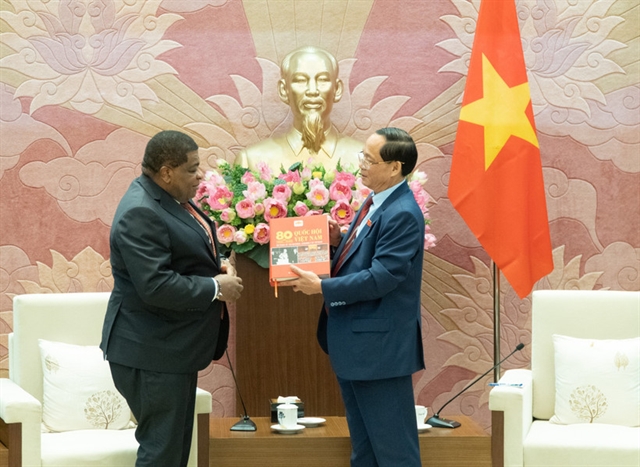 Society
Society


|
| Three members of a family get clean water from a tap in Bù Rên Commune, in the southern province of Bình Phước. — VNA/VNS Photo |
HÀ NỘI — Việt Nam is in danger of missing the target of providing 93-95 per cent of people in rural areas, and at least 95 per cent in urban areas, access to clean water by 2025.
Data revealed at a conference in Hà Nội on Tuesday morning showed that only 84.2 per cent of people in urban areas have access to clean water. That number is just 34.8 per cent in rural areas.
The target was set under Resolution No. 16/2021/QH15, as part of the five-year socio-economic development plan for 2021-25.
Nguyễn Quang Đồng, Director of the Institute for Policy Research and Media Development (IPS), already pointed out some reasons for the situation.
He said the privatisation of clean-water supplying services had not been accompanied by the establishment of a reasonable market structure for the services.
"For example, how is the state responsible for providing clean water services; at what stage does the private sector participate; and what is the mechanism to attract public-private partnership for private investment in domestic water supply," he said.
Therefore, while the State lacked investment resources to develop the services, it still failed to attract private investment, he said.
In part, this was because private enterprises faced high risks when they entered the market, he said.
Meanwhile, State-owned enterprises also faced difficulties as water prices were low and could not afford to expand the water supply area, he said.
According to Đồng, retail prices of water, especial the price of domestic water, are low.
It costs only VNĐ3,000 – 18,000 (USD$0.13-0.78) per cu.m of domestic water in urban areas and VNĐ2,000 – 11,000 ($0.08-0.48) in rural areas.
In many localities, including Hà Nội, the price of domestic water has not been adjusted over the past ten years, while the price of electricity has been adjusted nine times in the same period.
Besides, the State management of clean water is fragmented under five ministries, which worsens the situation.
The Natural Resources and Environment Ministry is assigned to manage the production of clean water. The Ministry of Construction and the Agricultural and Rural Development Ministry are assigned to be in charge of distributing clean water. The Ministry of Finance is assigned to manage the selling price of water while the Ministry of Health is assigned to control the water quality.
Recommendations
Đồng suggested that it would be necessary to have a comprehensive assessment and an overall policy to improve the clean water trading market.
It should be linked to the development of the Law on Water Supply and Water Treatment, which the Government had requested the Ministry of Construction to compile, he said.
Nguyễn Đình Cung, former Director of the Central Institute for Economic Management (CIEM), said the clean water market still had many incomplete problems, from organising to managing and operating the market.
Thus, he said there should be a separate law for the water market, regulating not only the issue of water supply but also the problem of domestic water treatment.
"Similar to the electricity sector having the Electricity Law, water needs a law to create a unified and transparent framework for the clean water market," he added.
National Assembly (NA) deputy Nguyễn Quang Huân, a member of the NA's Committee on Science, Technology and Environment, said that attracting private investment was necessary to expand clean water supply, ensuring the right to access water for people.
However, for private participation, the frameworks and regulations for the market needed to be further improved, he said.
A legal document was necessary and the Government should soon propose it to the National Assembly for consideration, he said.
Moreover, mechanisms and policies were advised to be managed synchronously and effectively from central to local levels. — VNS




